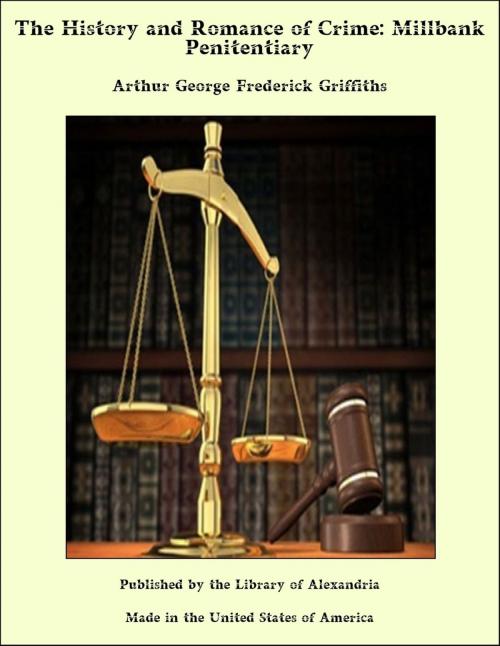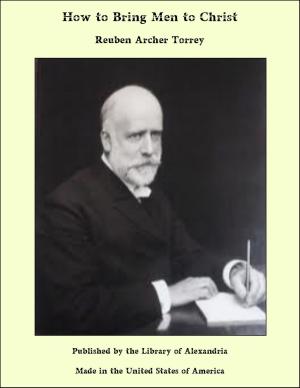The History and Romance of Crime: Millbank Penitentiary
Nonfiction, Religion & Spirituality, New Age, History, Fiction & Literature| Author: | Arthur George Frederick Griffiths | ISBN: | 9781465604231 |
| Publisher: | Library of Alexandria | Publication: | March 8, 2015 |
| Imprint: | Language: | English |
| Author: | Arthur George Frederick Griffiths |
| ISBN: | 9781465604231 |
| Publisher: | Library of Alexandria |
| Publication: | March 8, 2015 |
| Imprint: | |
| Language: | English |
Millbank Prison stood for nearly a century upon the banks of the Thames between Westminster and Vauxhall, a well-known gloomy pile by the river side, with its dull exterior, black portals, and curious towers. This once famous prison no longer attracts the wide attention of former days but the very name contains in itself almost an epitome of British penal legislation. With it one intimately associates such men as John Howard and Jeremy Bentham; an architect of eminence superintended its erection; while statesmen and high dignitaries, dukes, bishops, and members of Parliament were to be found upon its committee of management, exercising a control that was far from nominal or perfunctory, not disdaining a close consideration of the minutest details, and coming into intimate personal communion with the criminal inmates, whom, by praise or admonition, they sought to reward or reprove. Its origin and the causes that brought it into being; its object, and the success or failure of those who ruled it; its annals, and the curious incidents with which they are filled,—these are topics of much interest to the general reader. At this distant time it is indeed interesting to observe how thoroughly John Howard understood the subject to which he had devoted his life. In his prepared plan for the erection of the prison he anticipates exactly the method we are pursuing to-day, after more than a century of experience. “The Penitentiary Houses,” he says, “I would have built in a great measure by the convicts. I will suppose that a power is obtained from Parliament to employ such of them as are now at work on the Thames, or some of those who are in the county gaols, under sentence of transportation, as may be thought most expedient. In the first place, let the surrounding wall, intended for full security against escapes, be completed, and proper lodges for the gatekeepers. Let temporary buildings of the nature of barracks be erected in some part of this enclosure which will be wanted the least, till the whole is finished. Let one or two hundred men, with their proper keepers, and under the direction of the builder, be employed in levelling the ground, digging out the foundation, serving the masons, sawing the timber and stone; and as I have found several convicts who were carpenters, masons, and smiths, these may be employed in their own branches of trade, since such work is as necessary and proper as any other in which they can be engaged. Let the people thus employed chiefly consist of those whose term is nearly expired, or who are committed for a short term; and as the ground is suitably prepared for the builders, the garden made, the wells dug, and the building finished, let those who are to be dismissed go off gradually, as it would be very improper to send them back to the hulks or gaols again.”
Millbank Prison stood for nearly a century upon the banks of the Thames between Westminster and Vauxhall, a well-known gloomy pile by the river side, with its dull exterior, black portals, and curious towers. This once famous prison no longer attracts the wide attention of former days but the very name contains in itself almost an epitome of British penal legislation. With it one intimately associates such men as John Howard and Jeremy Bentham; an architect of eminence superintended its erection; while statesmen and high dignitaries, dukes, bishops, and members of Parliament were to be found upon its committee of management, exercising a control that was far from nominal or perfunctory, not disdaining a close consideration of the minutest details, and coming into intimate personal communion with the criminal inmates, whom, by praise or admonition, they sought to reward or reprove. Its origin and the causes that brought it into being; its object, and the success or failure of those who ruled it; its annals, and the curious incidents with which they are filled,—these are topics of much interest to the general reader. At this distant time it is indeed interesting to observe how thoroughly John Howard understood the subject to which he had devoted his life. In his prepared plan for the erection of the prison he anticipates exactly the method we are pursuing to-day, after more than a century of experience. “The Penitentiary Houses,” he says, “I would have built in a great measure by the convicts. I will suppose that a power is obtained from Parliament to employ such of them as are now at work on the Thames, or some of those who are in the county gaols, under sentence of transportation, as may be thought most expedient. In the first place, let the surrounding wall, intended for full security against escapes, be completed, and proper lodges for the gatekeepers. Let temporary buildings of the nature of barracks be erected in some part of this enclosure which will be wanted the least, till the whole is finished. Let one or two hundred men, with their proper keepers, and under the direction of the builder, be employed in levelling the ground, digging out the foundation, serving the masons, sawing the timber and stone; and as I have found several convicts who were carpenters, masons, and smiths, these may be employed in their own branches of trade, since such work is as necessary and proper as any other in which they can be engaged. Let the people thus employed chiefly consist of those whose term is nearly expired, or who are committed for a short term; and as the ground is suitably prepared for the builders, the garden made, the wells dug, and the building finished, let those who are to be dismissed go off gradually, as it would be very improper to send them back to the hulks or gaols again.”















